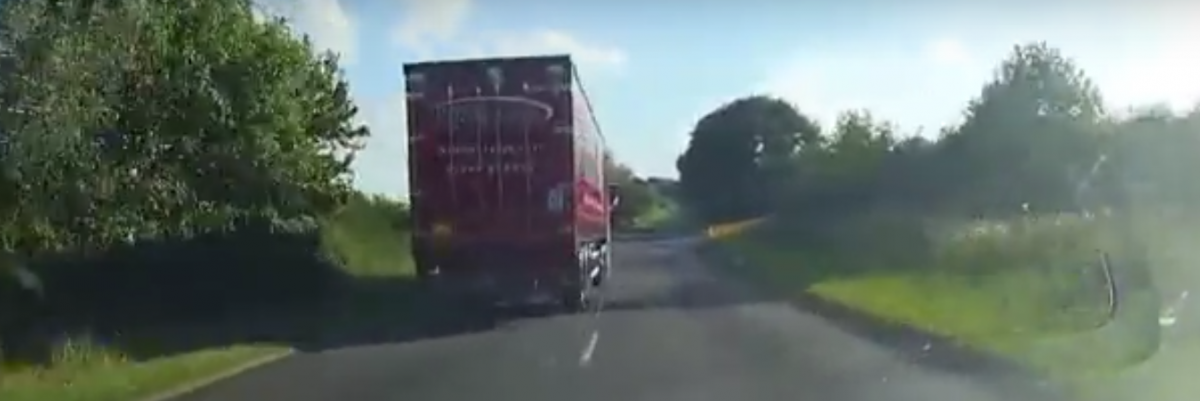With holidays on the horizon, there will be more people dusting off their caravan and packing for the long weekends. IAM RoadSmart has partnered up with the Caravan and Motorhome Club to offer some advice for a successful holiday trip.
Going away with the whole family and the caravan, trailer tent or camping trailer is a great experience. By ensuring that you load the caravan or trailer correctly, and deal appropriately with other traffic, you can help ease the stress levels, especially if you lack towing experience.
With the south west of England being a very popular place to visit, it is not surprising that the South West has some of the highest incident rates for caravans. Between January 2017 and May 2018 there have been 850 caravan or trailer incidents on main roads in the South West region, with 460 of those occurring in the summer months of May to September last year – a sure way to put a sudden end to a lovely holiday. With the majority of caravans only being used over the summer months, this figure needs to be reduced.
Most incidents happen around the weekend. Nearly a third of all incidents occur on Saturdays and Sundays, with Mondays and Fridays not too far behind.
Caravan and trailer road-worthiness is just as important as your car’s, and particular care is needed for that first summer outing, as many are parked up and unused over the winter.
We recommend that before you start your trip you make sure you have checked both your car and caravan or trailer. Especially check your tyres as they should be inflated to the correct pressure, have a good amount of tread (no lower than 1.6mm) and be free from damage.
The caravan breakaway cable (or safety chain on smaller unbraked trailers) should be in good condition and connected correctly. If you have a caravan or a large box-shaped trailer you will almost always need to fit extension mirrors – these will help make sure you have a good view behind you and comply with the law.
Remember when loading your caravan or trailer to make sure it is not overloaded as this can put you at additional risk of instability, and mean you’re breaking the law. Ensure your heavy items are positioned correctly over the axle, low to the floor with lighter items higher up.
A quick refresher of the Highway Code will remind you that travelling in the right-hand lane of a motorway with three or more lanes is not allowed and your speed limit when towing is 60 mph on dual carriageways and motorways and 50 mph on single carriageways, unless a lower overall limit is applies.
Be extra vigilant on downhill stretches as your speed can easily creep up and get too high – this is a common contributory factor to your caravan/trailer losing stability. Remember, you will need more room to stop when towing and you should always have a big enough gap to be able to slow down and stop in an emergency.
Towing in high winds needs additional care and perhaps a change of route should be considered. However, it’s not just windy days you need to be mindful of. Overtaking large vehicles can place you in their “bow wave” and this can cause instability of caravans which are badly loaded and/or being towed too fast.
Martin Spencer, technical manager at the Caravan and Motorhome Club says: “Towing a caravan or other trailer can be unfamiliar, but doesn’t need to be intimidating. By getting the basic set-up right, then following straightforward advice over issues such as speed and safety around other vehicles, towing can be relaxed, easy and comfortable. Above all, it will be safe.
In almost all cases, serious incidents only occur because inexperienced drivers have not taken the right advice, or experienced ones have become complacent. The Club has 15 training centres across the country* so anyone just starting out, or those needing some refresher training can receive the best possible guidance.”
Neil Greig, director of policy and research at IAM RoadSmart says: “The advanced driving skills of observation, anticipation and planning are key to good towing. They will keep you a safe distance from the vehicle in front and help you predict problems ahead and around you. If you prepare yourself, your family and your vehicles for the road ahead your trip will be as relaxing as possible.”
* https://www.caravanclub.co.uk/advice-and-training/training-courses/
Of the fifteen training centres, the nearest to our area are:
Diamond Driver Training, Newark, Nottingham
Towing Solutions Macclesfield, Cheshire


